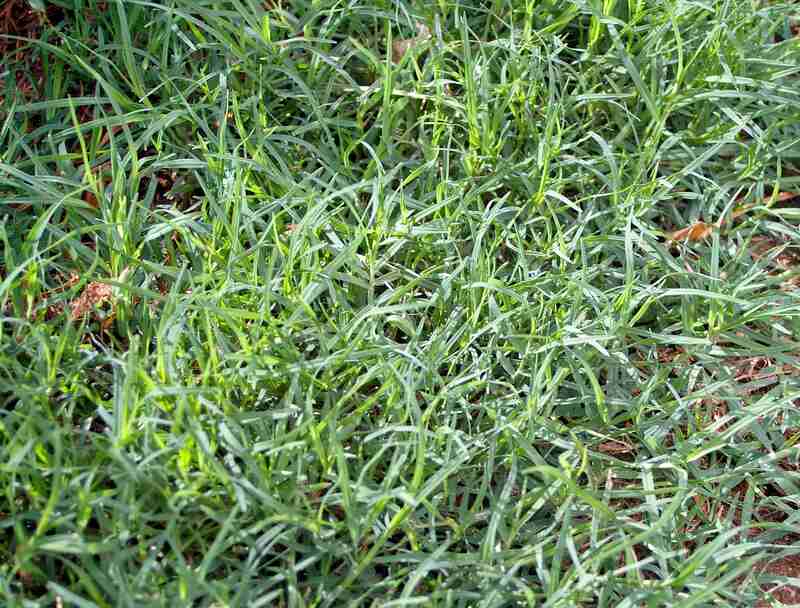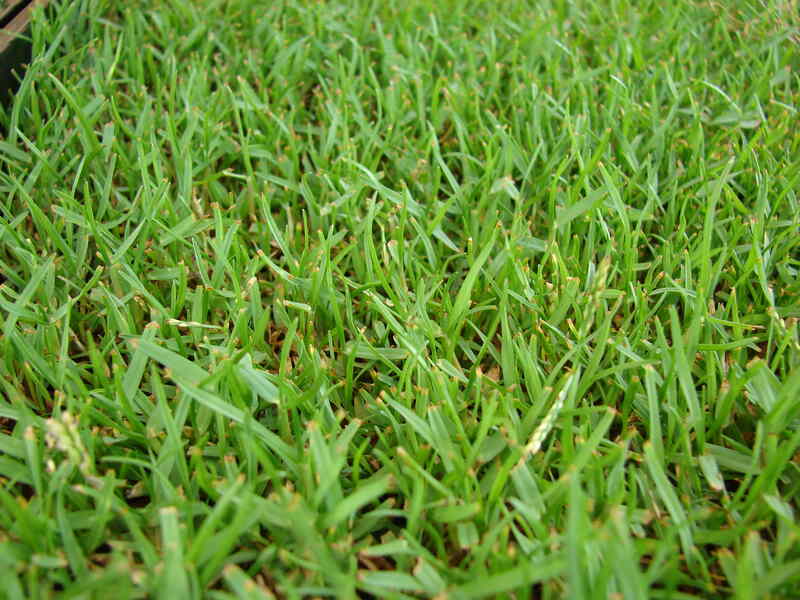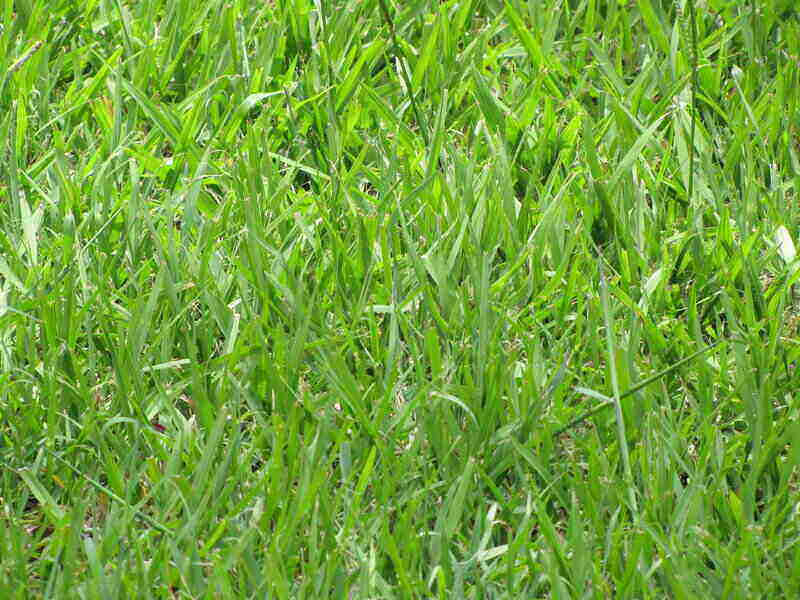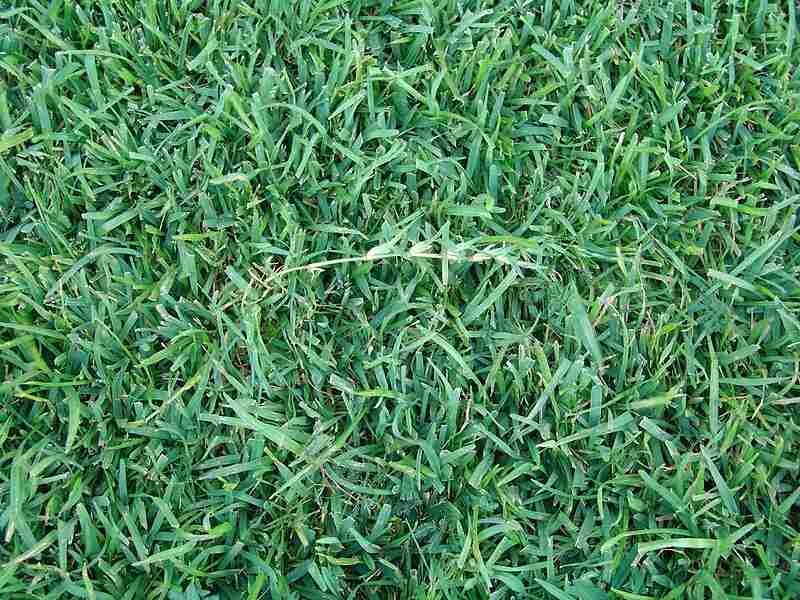5 Best Grass Types for Lakeland, FL
BY TATIANA BARRIE | APRIL 16TH, 2023 | FLORIDA, LAKELAND, LAWN CAREMaintaining a Lakeland lawn that rivals the manicured greens of the Cleveland Heights Golf Course is a tough task. Swan City’s unique subtropical climate requires a smart grass choice, or else you’ll find yourself spending more time battling weeds and bare spots than enjoying epic cornhole tournaments and pool parties. To help you turn your yard into the perfect playground for outdoor fun, we’ve compiled a list of the best grass types for Lakeland.
In the steamy, sauna-like summers of Central Florida —where hot, humidity, and heavy rainfall are just a part of daily life— the secret to having a green, lush lawn is simple: opt for warm-season grasses. This article explores 5 warm-season grasses: bahiagrass, Zoysiagrass, St. Augustinegrass, bermudagrass, and centipedegrass.
However, make sure to take some time to think about how these grass types will fit into your lawn’s unique needs. Your perfect pick will depend on things like your soil type, how much time you want to spend on maintenance, and what kind of look or feel you’re going for.
Here’s what we’ll cover:
Warm-Season vs. Cool-Season Grasses
Warm-season grasses grow best in regions with hot summer and mild winters, generally in the southern parts of the United States. They are typically heat and drought tolerant, requiring less water than cool-season grasses. They also tend to go dormant and turn brown during the winter months when temperatures drop.
Cool-season grasses grow best in regions with mild summers and cold winters, typically in northern parts of the United States. They grow rapidly during the spring and fall months when temperatures are cooler, and go dormant during the hot summer months.
5 Warm-Season Grasses for Lakeland
As a Lakeland local, you know how brutal the city’s summers can be, with temperatures often soaring above 90 degrees Fahrenheit. With warm-season grasses, you won’t have to worry about your lawn turning brown and dying under the scorching sun.
The following grasses are heat-tolerant, and some varieties even have a deep root system that allows them to access water deep underground.
1. Bermudagrass

Photo Credit: Bidgee / Wikimedia Commons / CC BY-SA 3.0
Bermudagrass is a staple in Lakeland’s parks and recreational areas, and it’s easy to see why. Its fine to medium texture creates a dense and soft surface that’s perfect for playing, picnicking, and simply relaxing.
This means bermudagrass is super durable and can withstand heavy foot traffic, so it’s a great choice if you like to host backyard BBQs or set up slip-n-slide adventures for your kids. Plus, it requires minimal shade and thrives in full sunlight, which is perfect for Lakeland’s sunny climate.
The only downside to this grass type is that you’ll need to mow it regularly during the growing season. If you don’t, it’ll quickly become invasive and spread to flower beds, vegetable gardens, or even your neighbor’s yard.
Classification: Warm-season grass
Spreads by: Stolons and rhizomes
Shade tolerance: Low; thrives in full sun
Drought tolerance: High
Foot traffic tolerance: High
Maintenance needs: Needs frequent mowing due to fast growth rate; develops thatch easily; needs regular fertilization
Mowing height: 0.5-1.5 inches for hybrid Bermudagrass cultivars. Mow common Bermudagrass down to 1.5-2.5 inches.
Potential for disease: Good resistance to disease, although diseases are common; low resistance to insects
Soil pH: 6-6.5
Soil type: Tolerates most soil types
Other notes: It can be propagated through seeds, sod, or sprigs.
2. Zoysiagrass

Photo Credit: Forest and Kim Starr / Flickr / CC BY 2.0
Zoysiagrass is a must-have for anyone looking to protect their yard from turning into a barren landscape during Lakeland’s dry spells. Sure, it needs regular watering to keep its gorgeous green color, but it’s a total champ when it comes to handling Florida’s typical drought periods —way better than other grass options like St. Augustinegrass.
Plus, the dense growth pattern of Zoysiagrass creates a natural barrier against weeds, giving them a tough time gaining a foothold in your lawn.On top of that, it has a deep root system that helps prevent erosion by holding soil together when those torrential summer rains hit Lakeland.
Classification: Warm-season grass
Spreads by: Stolons and rhizomes
Shade tolerance: Tolerates light to moderate shade
Drought resistance: High
Foot traffic tolerance: High
Maintenance needs: Low to moderate nitrogen requirement; moderate mowing frequency
Mowing height: 1-2.5 inches
Potential for disease: Low; large patch, root decline, spring dead spot, rust, Curvularia, and lead spot can occur
Potential for pests: Low; most common pests are mites, grubs, mole crickets, hunting billbugs, army worms, chinch bugs, and sod webworms
Soil pH: 6-6.5
Soil type: Well-draining, some cultivars more tolerant of a wide range of soils than others
Other notes: There are several different species of Zoysiagrass, each with their own unique characteristics and growing requirements. Some common species include Meyer, Emerald, and Zeon.
3. St. Augustinegrass
If your yard has a bunch of trees and tall shrubs giving you some much-needed shade during Lakeland’s scorching summers, St. Augustinegrass should definitely be on your radar. While other grass types might struggle and turn brown in those cool, shady spots, St. Augustinegrass can tolerate them pretty well.
This grass type is also incredibly versatile, able to grow in a wide range of soils and pH levels.
Not to mention, it’s a fast grower, meaning you won’t have to wait long to see its beautiful, thick blades of grass. Now, while it can resist moderate foot traffic, it’s not the softest grass underfoot.
Classification: Warm-season grass
Spreads by: Stolons
Shade tolerance: Moderate shade tolerance, among the highest of any warm-season grass; some cultivars are more shade tolerant than others
Drought resistance: Moderate
Foot traffic tolerance: Moderate
Maintenance needs: Moderate to high mowing frequency
Mowing height: 2.5-4 inches (mow dwarf varieties from 2.5-3 inches; standard cultivars from 3-4 inches; mow tall in shade)
Potential for disease: Moderate to high; prone to gray leaf spot, large patch, and take-all root rot
Potential for pests: High; prone to chinch bugs, cutworms, mole crickets, grass loopers, army worms, web worms, and grubs
Soil pH: 6-7.5
Soil type: Tolerates many soil types; prefers moderately fertile and moist (not waterlogged) soils; not a highly drought-tolerant grass; doesn’t tolerate soil compaction
Other notes: St. Augustinegrass may struggle in cold weather. Some cultivars (such as Palmetto) can handle cooler temperatures better than others. However, when winter rolls around, it’s a good idea to take a few extra steps to protect your St. Augustinegrass from the cold.
4. Bahiagrass

Photo Credit: Forest and Kim Starr / Flickr / CC BY 2.0
If you’re looking to establish a Lakeland lawn quickly, bahiagrass it’s a great option. This type of grass grows super fast because it’s an amazing seed producer. Plus, it looks great with its medium to coarse texture and vibrant green color. The best part? There are loads of varieties to pick from.
It has a lovely fine texture, and it’s a champ when it comes to thriving in sandy soils. Another well-known variety you might like is Argentine bahiagrass. This one’s got a bit of a coarser texture, but the upside is that it’s super pest-resistant and easy to maintain.
Whatever type of bahiagrass you choose, keep in mind that it tends to produce tall seedheads. In such cases, regular mowing will help you maintain a more uniform appearance. Also, bahiagrass can’t stand the wear and tear of high-traffic areas, so make sure to use it only as part of an ornamental landscape.
Classification: Warm-season grass
Spreads by: Stolons
Shade tolerance: Low, but more shade-tolerant than Bermudagrass.
Drought tolerance: Moderate
Foot traffic tolerance: Low
Maintenance needs: Low fertility requirements. Expect frequent mowing (every one to two weeks) to remove seed heads.
Mowing height: Ideal grass height is 3 to 4 inches.
Potential for disease: Good resistance to disease and insect infestations
Soil pH: 5.5 to 6.5
Soil type: Performs well in sandy loam soils, but tolerates a wide range of soils, including soils with low fertility.
Varieties: Pensacola, Argentine, TifQuik, Tifton 9, UF Riata
Other notes: While Bahiagrass is relatively pest and disease-resistant, it can still fall prey to certain issues. For instance, during Lakeland’s humid, rainy summers, it might develop a brown patch fungal disease.
5. Centipedegrass

Photo Credit: James Becwar / Wikimedia Commons / CC0
Centipedegrass is warm-season grass that has a lovely fine texture and a charming light green color. It’s known for its shallow root system, which makes it a bit more susceptible to drought stress than other grass types. However, since it doesn’t need a lot of water to thrive, it’s still a great option for central Florida’s climate.
However, centipedegrass does have a few quirks. This type of grass can be a bit slow to recover from damage, so it’s important to take care when mowing or performing other lawn maintenance tasks. Make sure your mower blade is sharp and set to the appropriate height to avoid damaging the grass.
Classification: Warm-season grass
Spreads by: Stolons
Shade tolerance: Moderate — at least six hours of full sun per day
Drought resistance: Low to moderate
Foot traffic tolerance: Low
Maintenance needs: Low mowing frequency
Mowing height: 1.5-2 inches
Potential for disease: Moderate; prone to centipedegrass decline and iron chlorosis
Potential for pests: Moderate; prone to ground pearl insects, grubs, mole crickets, sod webworms, and lawn caterpillars
Soil pH: 5-6
Soil type: Acidic, infertile, at least moderately good drainage (very dense, clay soils produce poor results)
Other notes: It’s important to avoid over-fertilizing. Too much fertilizer can lead to thatch buildup, which can suffocate the grass roots and make your Centipedegrass lawn more susceptible to pests and diseases.
FAQ About Lakeland Grass Types
Bahiagrass and bermudagrass are easiest grass types to grow in Lakeland lawns. The first grows quickly, even in less-than-ideal soil conditions. You’ll find that it’s quite low-maintenance, so you won’t have to spend much time fretting over it.
Bermudagrass is also fantastic because it’s both heat-tolerant and versatile enough to grow well in sunny or shady areas. Besides, it’s perfect for lawns that see a lot of foot traffic, as it’s quite hardy and won’t easily get trampled.
Ideally, you should plant your grass seed in mid-spring or early summer. The high temperatures during these months give warm-season grasses the best chance to grow strong and healthy.
If you have a shady Lakeland lawn, look no further than St. Augustinegrass. This grass type is among the most shade-tolerant warm-season grasses.
Choose Plant and Grass Varieties for Your Lakeland Landscape
When it comes to designing your dream landscape, it’s important to consider the unique needs of your outdoor space. Think about how much sunlight your Lakeland lawn gets, what type of soil you have, and how much space you have to work with. Luckily, there are plenty of grass varieties that are well-suited to the Swan City’s climate.
However, choosing the right grass type isn’t the only thing to keep in mind when planning your landscape. Make sure to check out Florida natives plants as well. Incorporating native species to your yard can add a touch of local charm while also supporting the Lakeland ecosystem.
Want to turn your yard into a healthy and functional space? Connect with a Lakeland lawn care pro to get top-notch mowing, trimming, and edging services tailored to your yard’s specific needs.
Main Image Credit: Ebyabe / Wikimedia Commons / CC BY-SA 2.5